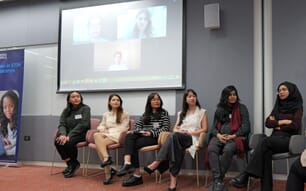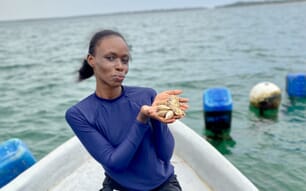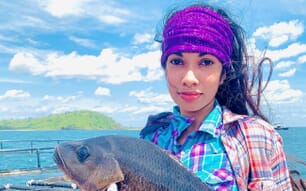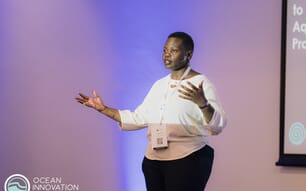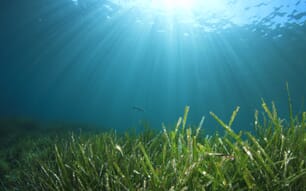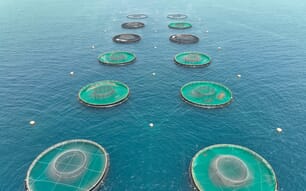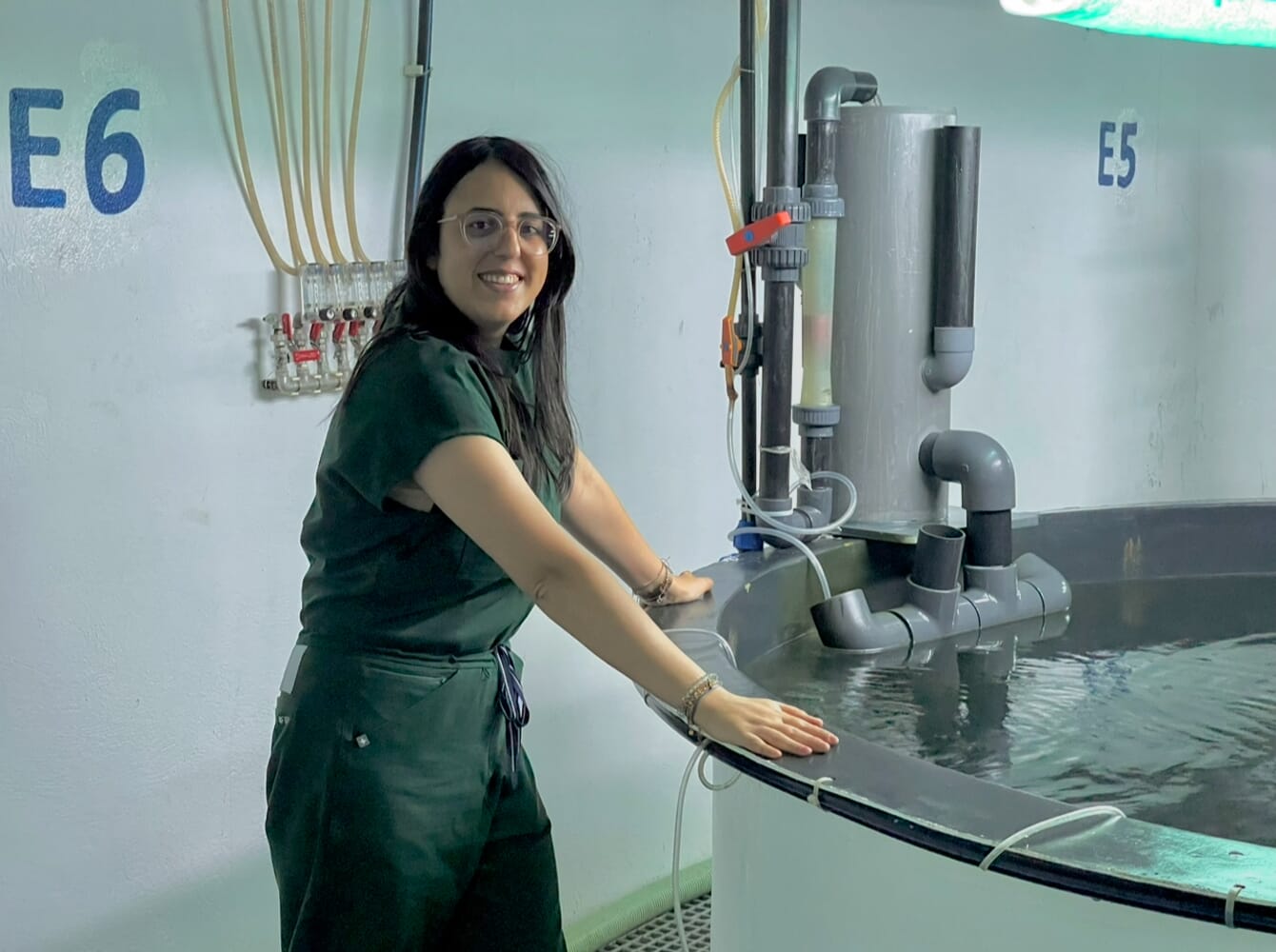
Can you tell me a bit about your background?
I’m a graduate of the National School of Veterinary Medicine in Tunisia and currently pursuing a master's degree in the epidemiology and immunogenetics of viral infections. Since 2019, I have been working in the aquaculture sector as a veterinarian at Aquaculture Tunisienne, a Tunisian company established in 1988, specialising in the production, breeding and marketing of sea bass (Dicentrarchus labrax) and gilthead sea bream (Sparus aurata). In 2021, I took full responsibility for the hatchery, and I am currently overseeing its growth and daily operations, as the director.
Can you give a quick overview of the aquaculture industry in Tunisia?
The country focuses primarily on high-value marine species, particularly European sea bass and sea bream. Currently, we have only two hatcheries specialised in the production of sea bass and sea bream: our hatchery, which produces approximately 30 million juveniles annually, and a smaller hatchery located in the south of the country, with a production capacity of around 5 million per year.
Together, these hatcheries cover only 15 percent of the total fingerling demand for offshore cage farms, the dominant aquaculture system in Tunisia. The remaining juveniles are imported from abroad. This shortage of hatcheries represents a major challenge to the sector’s growth.
What have been the most important milestones in your career so far?
One of the achievements I’m most proud of is leading the fish hatchery at Aquaculture Tunisienne. I successfully overcame numerous management challenges, improved fish quality, and implemented biosecurity protocols that significantly enhanced the health and quality of both fry and fish. As a result, customer satisfaction increased noticeably.
How do you view the role of women in this industry in Tunisia and beyond?
I believe that women play an important role in this field, especially since they often possess strong organisational skills – a key advantage in communication and team building – both of which are crucial in aquaculture. Moreover, women are increasingly establishing their presence in fish farms and hatcheries, particularly in Europe, where their role in the sector is becoming more visible and impactful.
What inspired you to study and work in aquaculture?
Living on the coast, I’ve always seen this field as a promising one, full of potential and challenges. My interest deepened after graduation, while working on my thesis focused on sea bream. After two years of working in aquaculture, my passion continued to grow, leading me to decide to pursue it as a long-term career path.
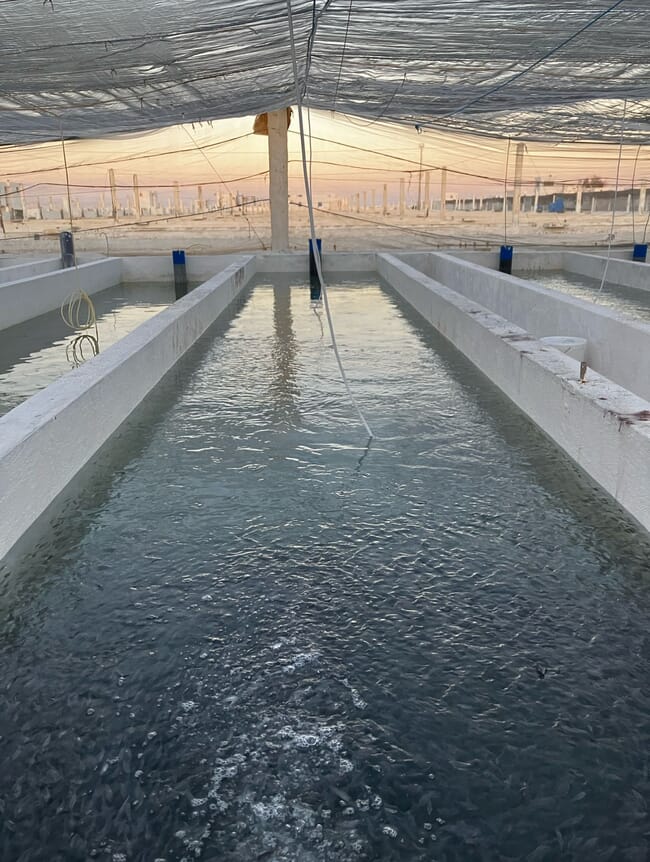
Can you provide details about the key aspects of the hatchery?
At Aquaculture Tunisienne, we specialise in production of European sea bass and gilthead sea bream, delivered at 4–6 grams. Our fully integrated hatchery includes broodstock units, live feed production systems, and larval, weaning, and nursery tanks. Depending on the physiological stage of the fish, we use both circular and rectangular tanks to ensure optimal rearing conditions.
We also operate a 5,000 m³ nursery unit. This stage is carried out in an open-flow system using direct seawater. The oxygen levels and temperature are monitored regularly to ensure optimal growing conditions. This phase is crucial for reinforcing the robustness of the fish and ensuring uniform size before transfer to sea cages or delivery to clients. It allows for better selection, growth performance, and overall quality of the juveniles.
What does a typical day’s work at the hatchery involve for you?
While there is no fixed routine at our hatchery, the day typically begins at 8:00 am with a tour of each section, accompanied by the section chiefs, to evaluate overall conditions, monitor stocks, and observe the health and activity of the fish. Each day brings new tasks and unique challenges.
What are the main challenges in aquaculture?
A hatchery represents the very first stage of life and larvae, like newborn babies, require constant care and attention. The main challenge lies in providing the ideal conditions, particularly in terms of water quality and nutrition. Healthy larvae lead to strong fingerlings and fish characterised by good health and growth rates, with minimal mortality.
On a different note, while women generally enjoy a respected position and equal access to job opportunities in Tunisia, aquaculture is still widely perceived as a male-dominated field, which presents a challenge, especially when a woman is in a leadership role. From my perspective, the key to overcoming this is communication. By staying connected with your team, solving issues together, and managing stress effectively, success becomes possible. Of course, the pressures of the job can be significant, and these increase further when a woman has children, but with determination, it is possible to thrive.
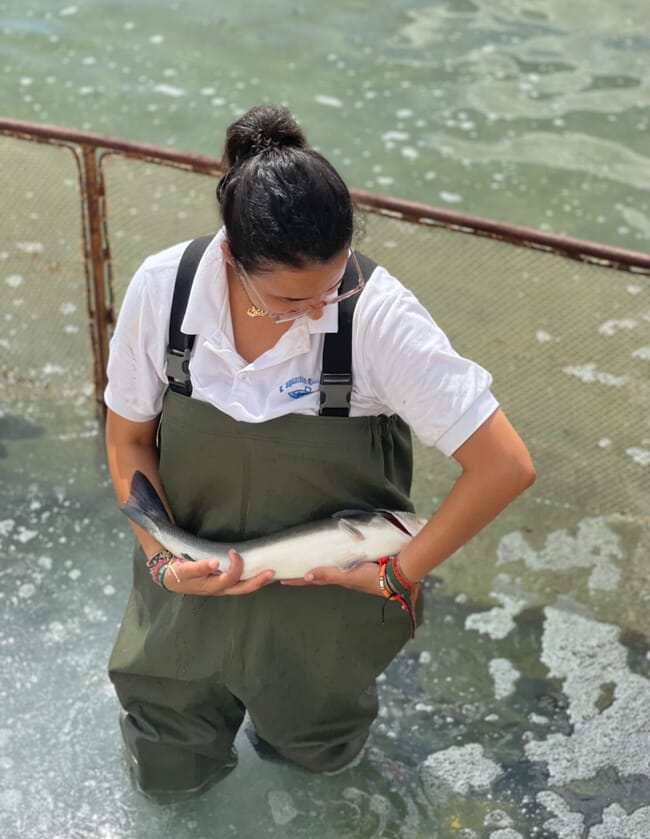
What advice would you give to women who are considering working in aquaculture?
My advice is that even if you have no prior experience, you can gain it through work. However, the most important thing is to be patient in order to overcome the challenges of this field. Being passionate about fish farming is essential, it helps you enjoy your work and stay committed to it. Additionally, you should always stay up-to-date, be sociable, read regularly about the latest technologies in aquaculture, and attend lectures and workshops to continue learning and growing. Aquaculture is not easy at first, but it’s definitely worth it.
What are your long-term ambitions?
My ambition is to further develop the hatchery to increase production and help reduce the country's reliance on imported fingerlings. On a personal level, I aspire to grow professionally and take on more senior leadership roles within the aquaculture sector.
If you could solve one issue in the aquaculture industry, what would it be?
The challenge of fish mortality caused by rising temperatures and climate change. Global warming contributes to the emergence of new pathogens and makes health management increasingly difficult. By improving disease prevention through effective vaccines, treatments and stronger biosecurity measures, we can reduce mortality rates and enhance aquaculture.

